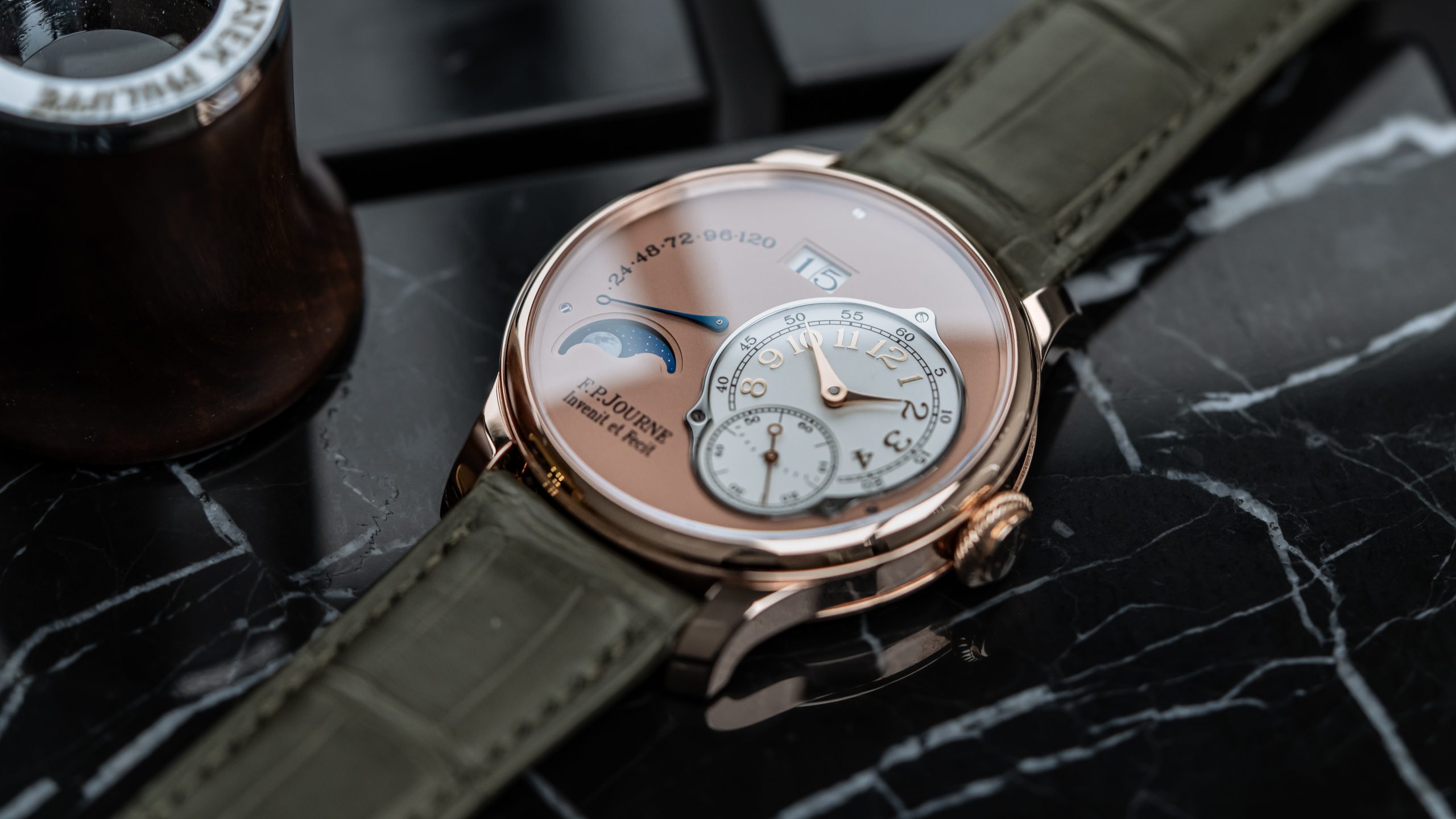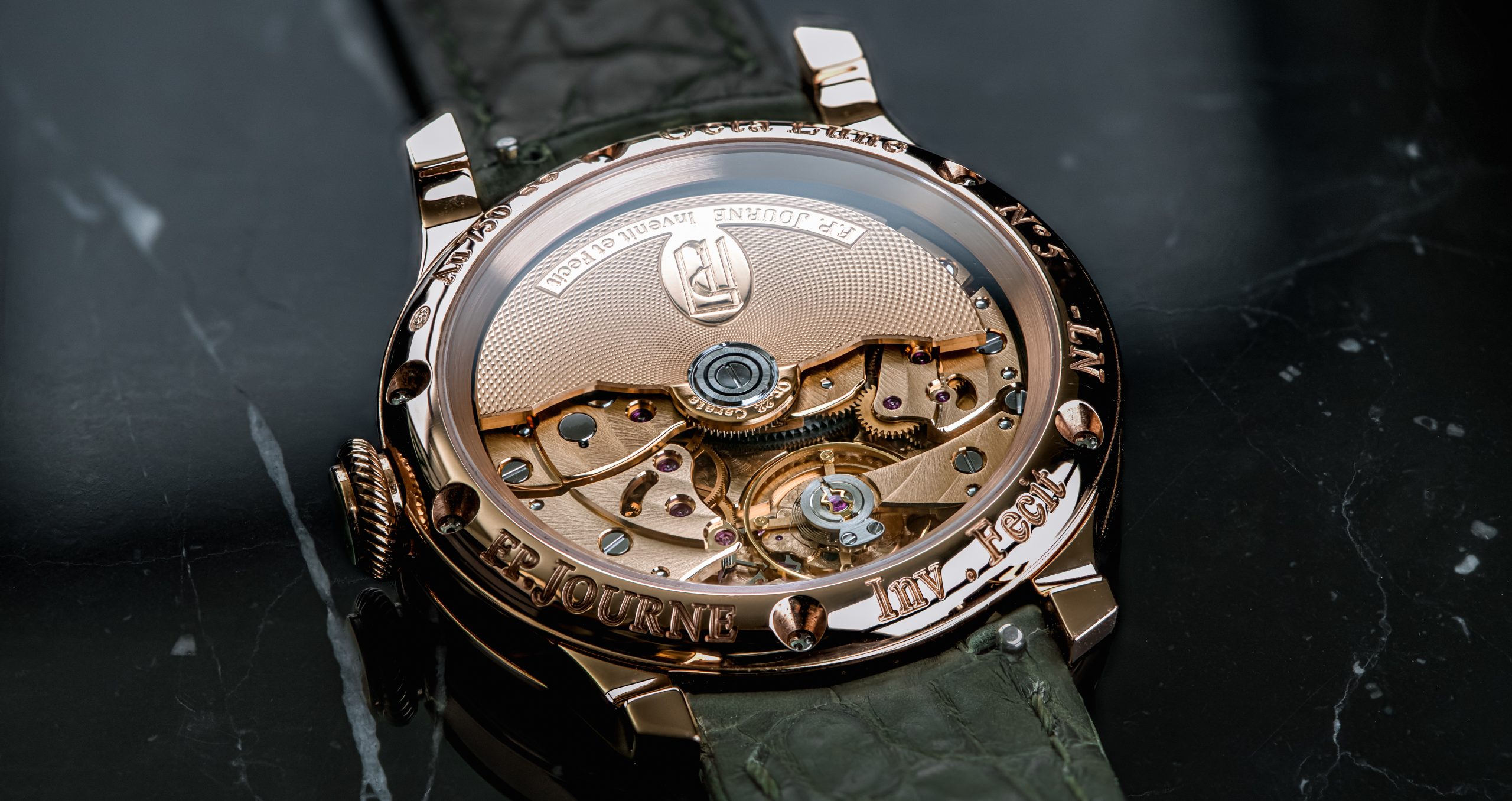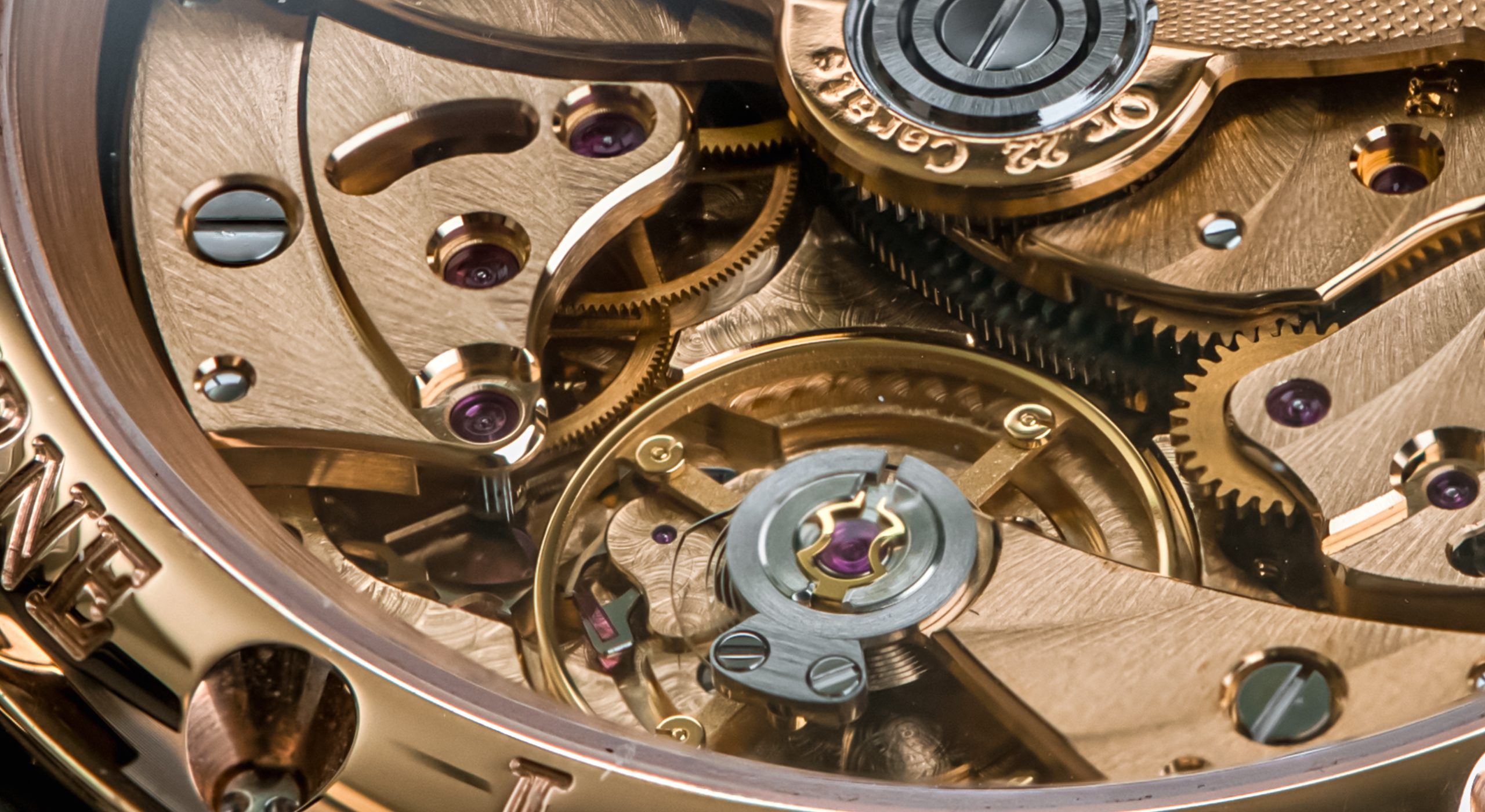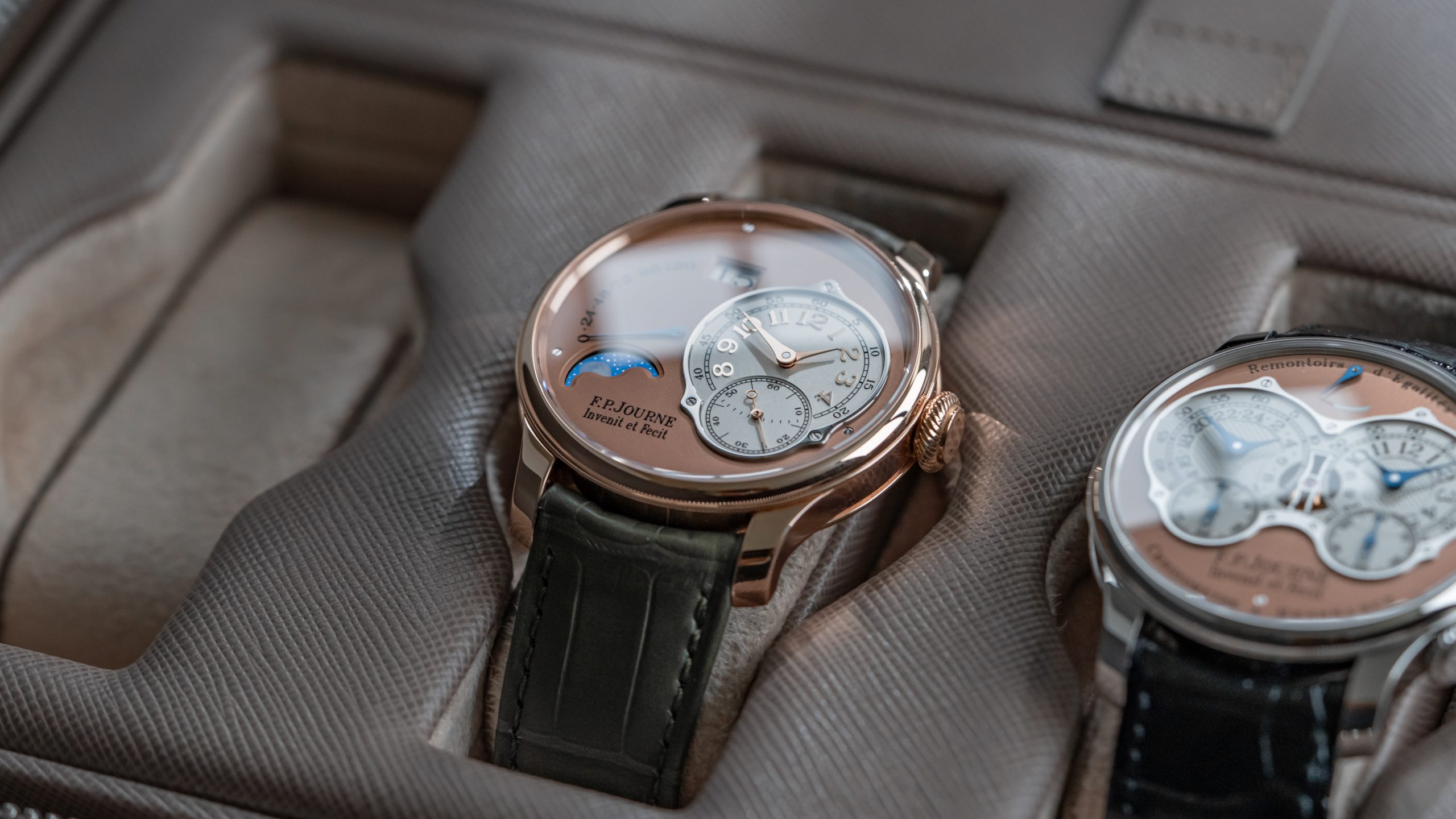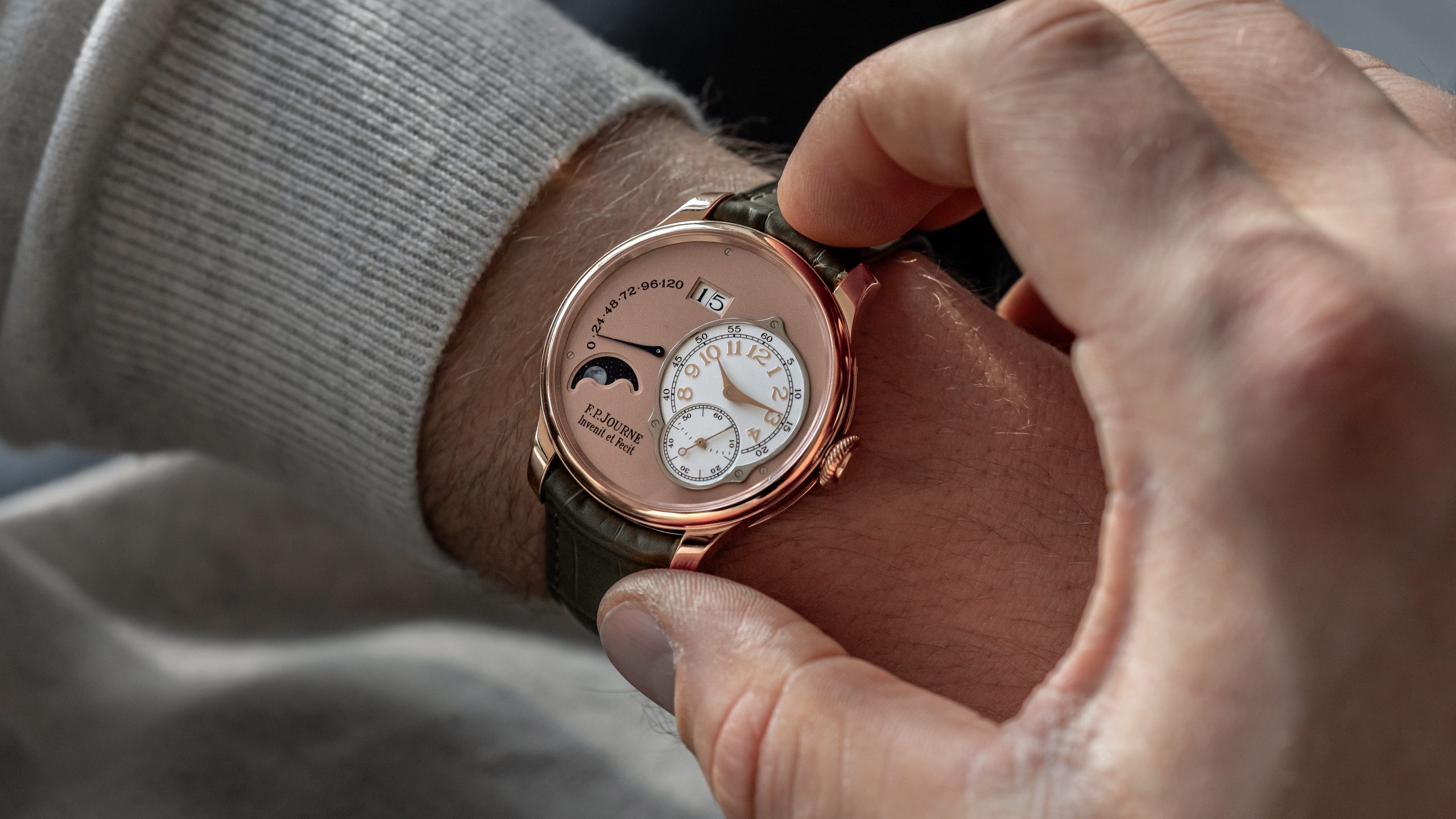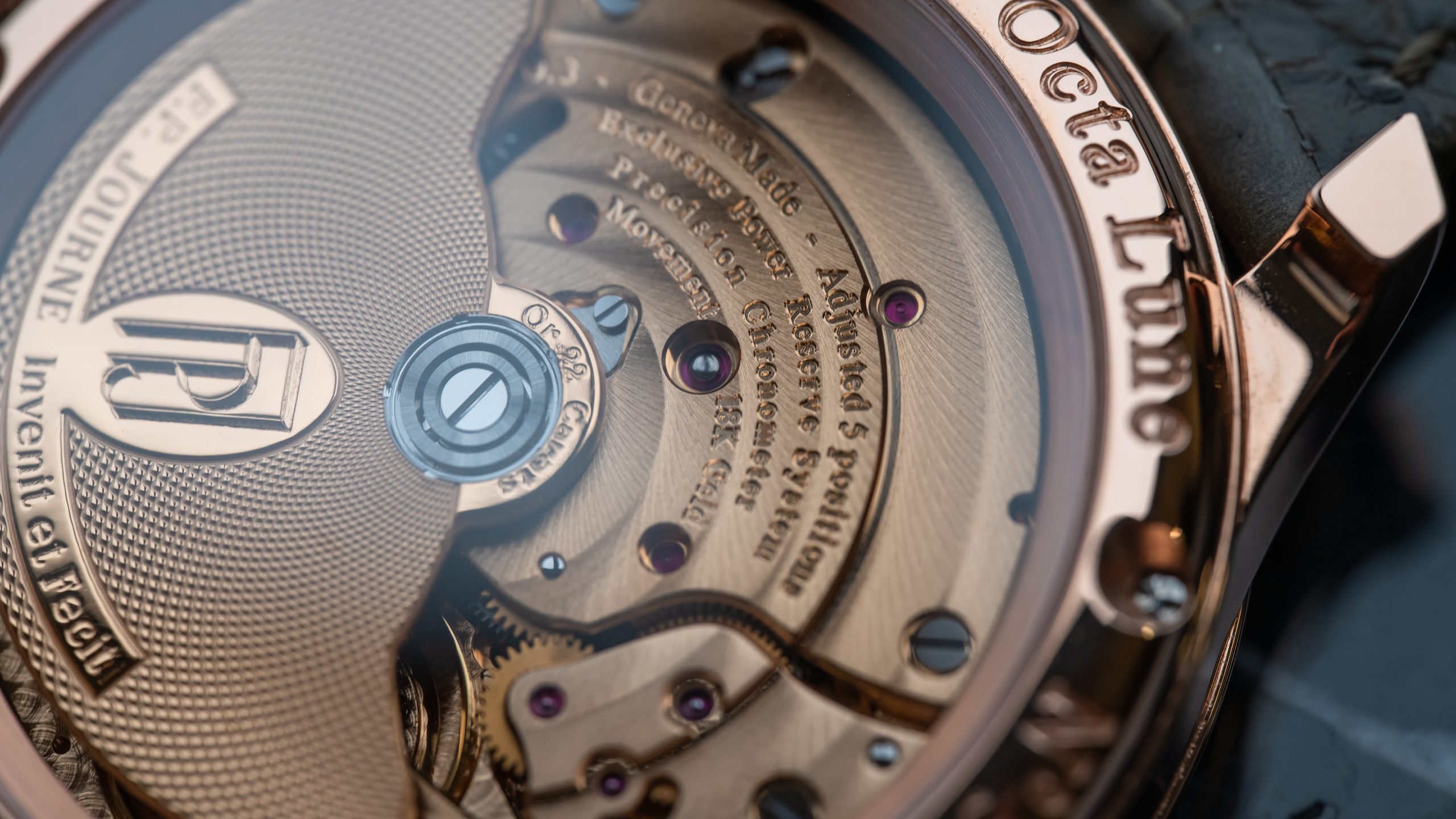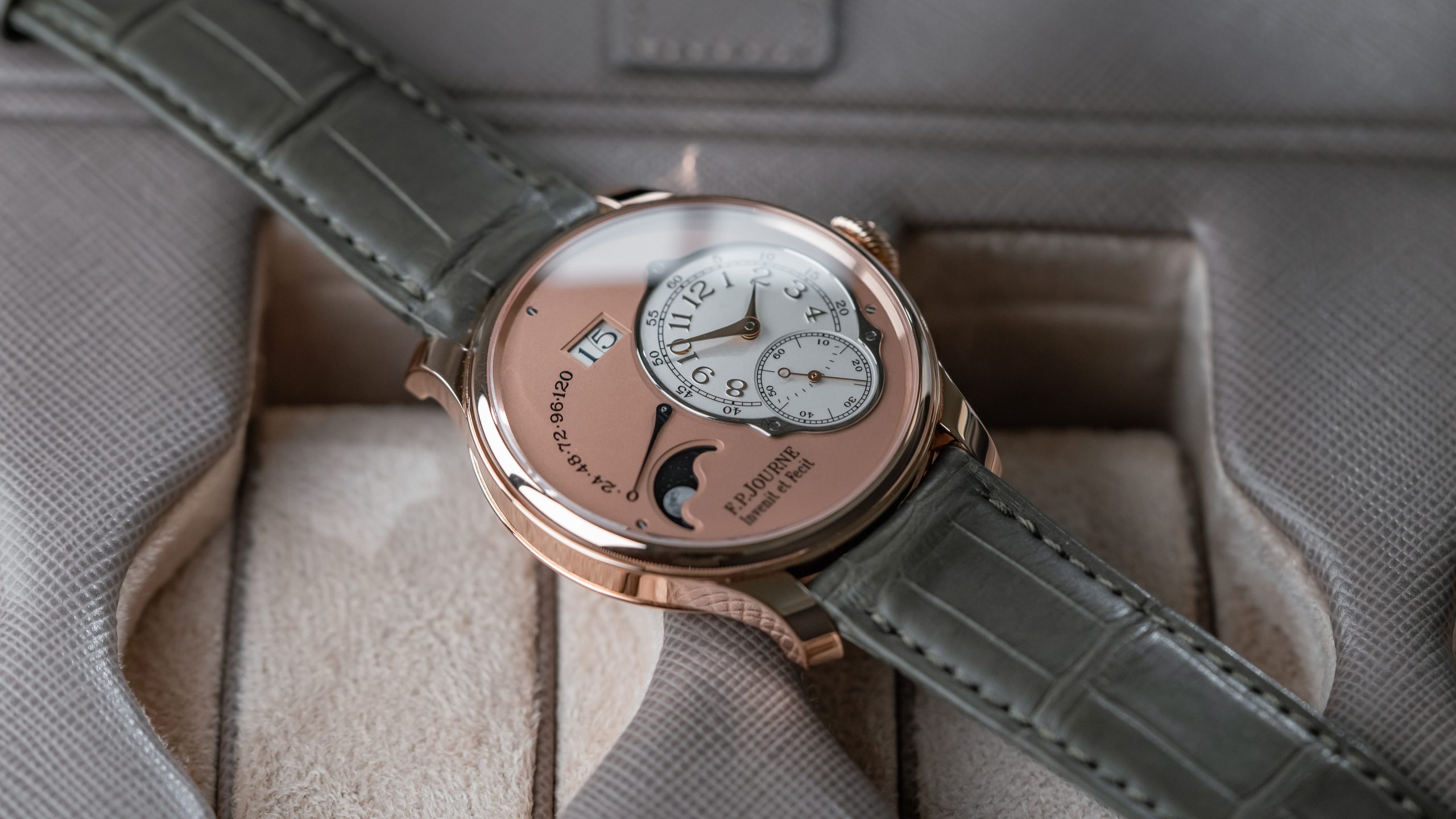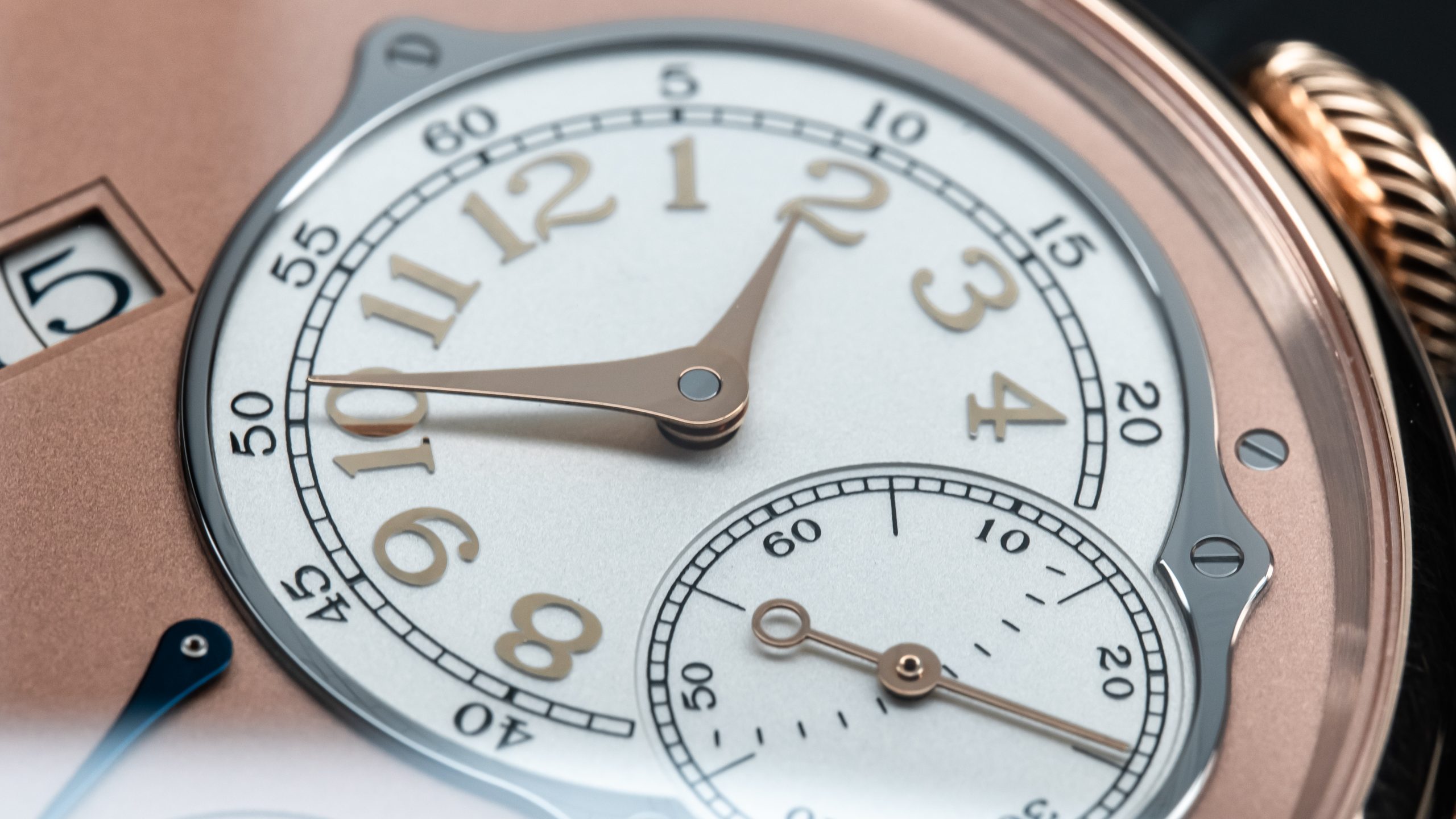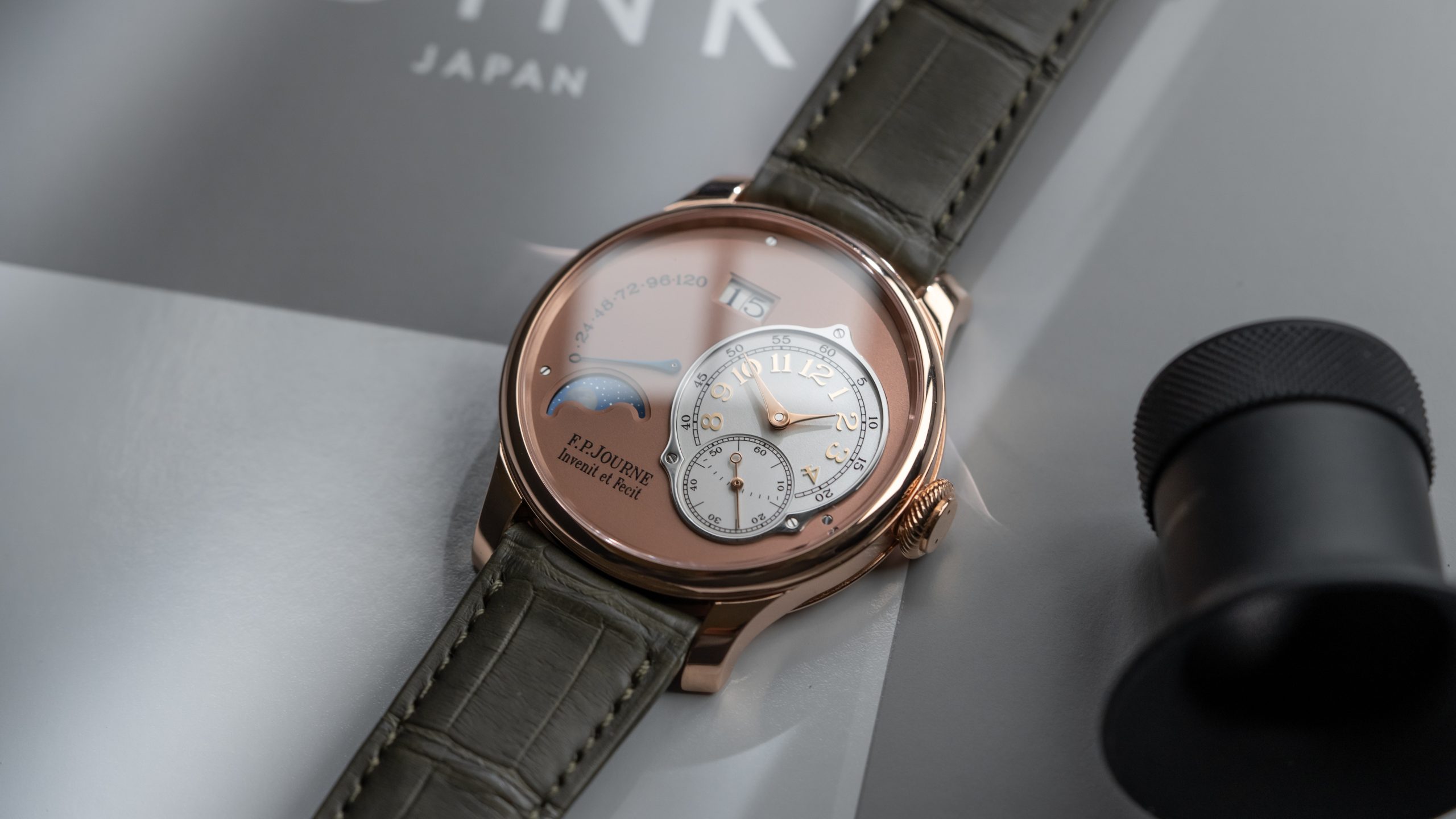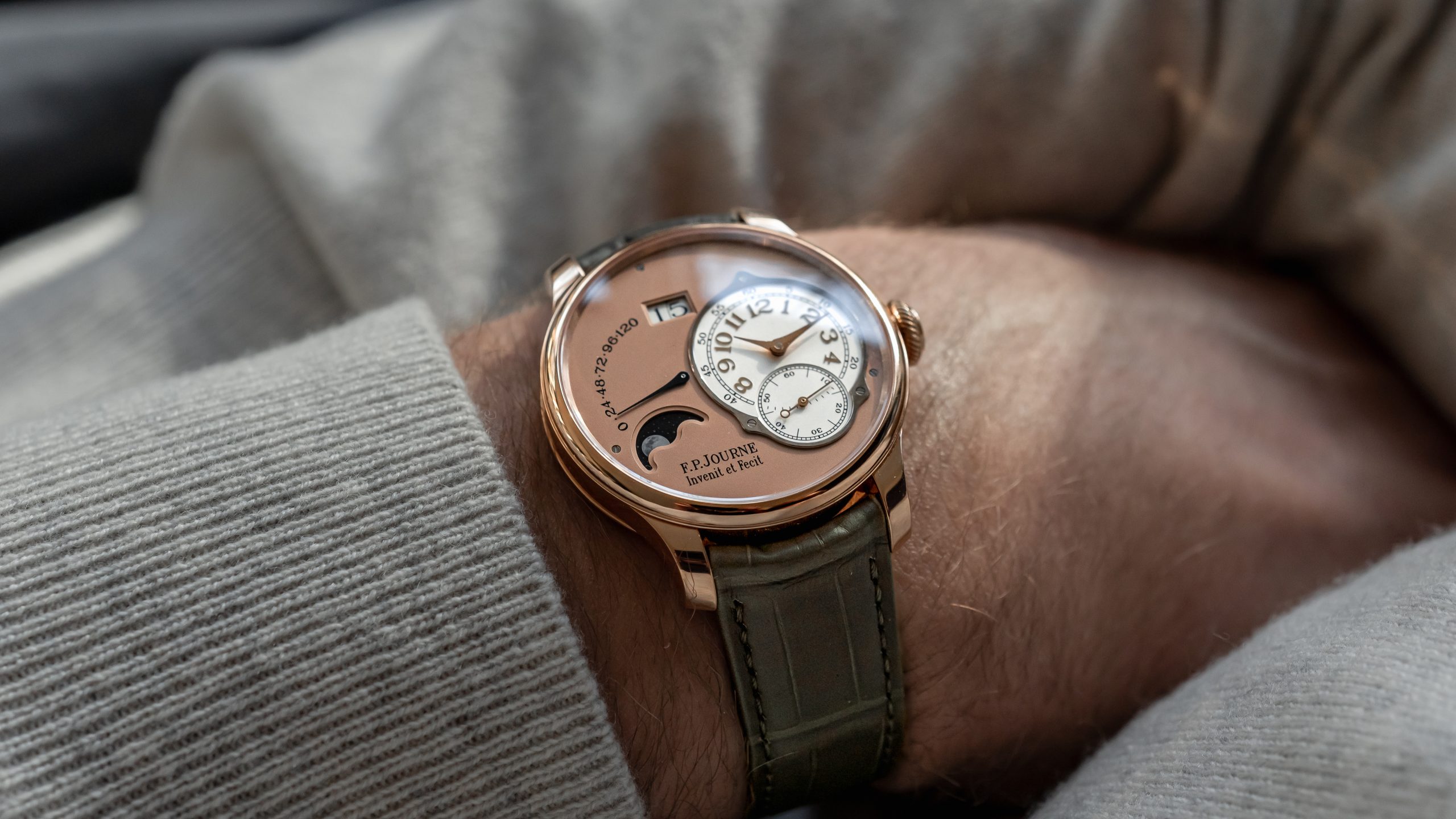After the Tourbillon Souverain and Chronomètre à Résonance, FP Journe developed his first automatic mechanism. This, the Octa, would go on to blossom into a range of complication. The first two made were the Octa Réserve de Marche and the Octa Lune, marking FP Journe's first foray into the world of self-winding. The Octa Lune, released 2003, is undoubtedly one of the most romantic watches in the FP Journe range, equal parts restrained and refined, and a core model to the brand's identity.
This Octa Lune is a clear standout for its salmon dial made of grained pink gold and pink gold case, known also as 'Pink on Pink'. Salmon dials, particularly in pink gold cases, are amongst the rarest configurations across all FP Journe models. The configuration is beloved partly for its undeniably attractive aesthetic and partly for its reminiscence of vintage Patek Philippe aesthetics. This LN generation of Octa Lune updated the aesthetic with a larger date and applied numerals, here in matching pink gold. Additionally, the actual moon of the sapphire moonphase is now laser ablated based on NASA photography to resemble the precise Lunar surface. The signature time layout oriented at 3, in order to elegantly peek out from under a cuff, remains unchanged.
The 223-component calibre 1300.3 is quite unique, with an off-center winding mass and made entirely of pink gold. Its mainspring is a metre long a 1mm thick, specially designed for this application, which lends a 120 hour reserve. Interestingly, the possible reserve is longer, but chronometric performance is only ensured through these 120 hours and so François-Paul chose to only indicate this range on dial. The winding mass is a guilloché performance, with a movement showcasing perlage, circular striping, fine anglage, and hand engraving.
The Octa Lune has become an independent modern classic in a few short decades, evolving very slowly over its generations but never changing the central design elements. The dial emphasizes the more artful side of François-Paul's watchmaking identity, giving far more visual importance to the moonphase than most dials. The restraint is equally evident, which allows the watchmaking itself to be the focus. There is no busyness to the dial, just proportionality and negative space with an emphasis on time and one heavenly body. It is restrained, refined, and romantic in the extreme.

